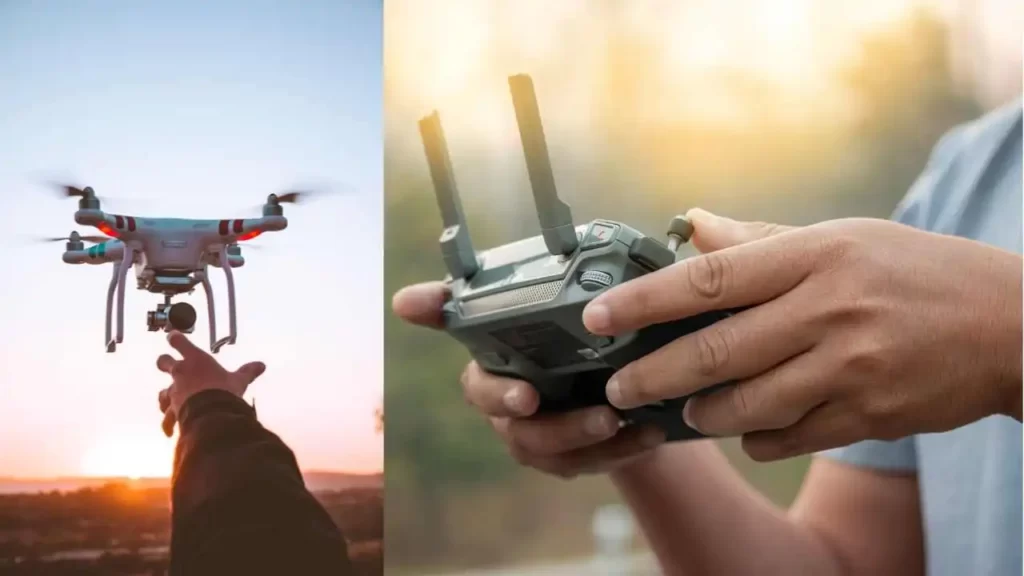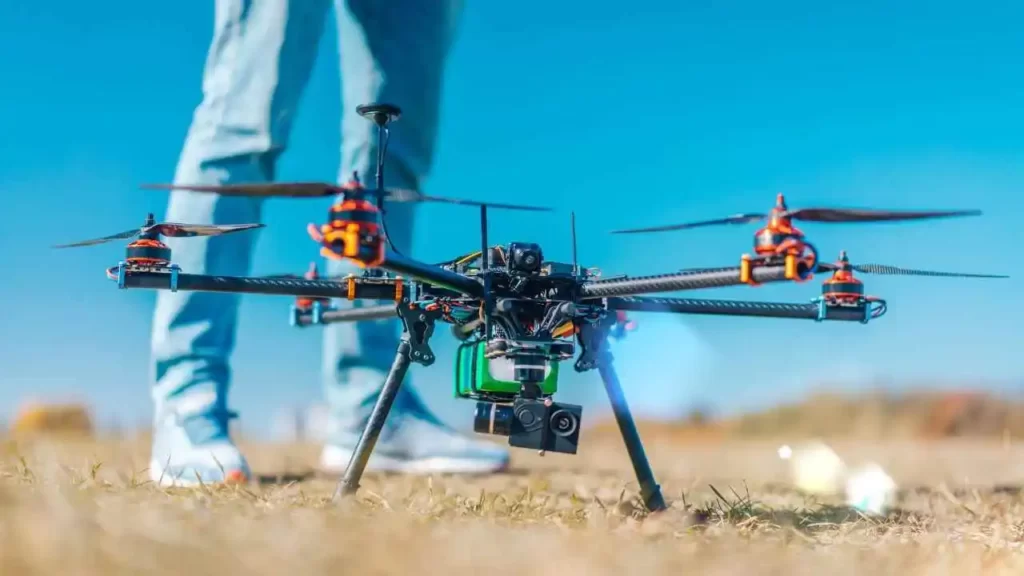Hello Friends, Today I am going to share about Drone Motor, it’s working and its essential parts.
If you have a drone, then you know how essential the motor is. It powers the propellers, which are responsible for flight control, and it generates thrust that allows the drone to move forward or backward.
If your drone doesn’t work properly or if there’s a problem with it, then it’s time to check out what might be wrong with your motor.
In this article, we’ll take a look at what exactly is involved in using a drone motor and how they work, so that when next you fly off into the sky with your quadcopter or RC plane (or other models), you’ll be able to handle any problems that come up along the way!
Let’s first discuss the Drone in short before proceeding with the Drone Motor.
What is a Drone?
A Drone is an unmanned aerial vehicle (UAV), also known as a surveillance aircraft or remotely piloted aircraft.

The Drone is a new technology that allows you to take flight in the sky, where your imagination can fly.
A drone is a small aircraft that can be controlled remotely and used for various applications such as aerial photography, surveying, videography, mapping, and monitoring. The word drone is an acronym for “remotely piloted aerial vehicle.”
Parts Of Drone
1. Drone Motor:
The Drone motor is the heart of your drone, and it’s important to know more about it before you purchase one. It’s responsible for propelling the drone forward, up to a certain speed.
2. Propeller:
The propeller is what gives drones their appearance; it turns against air pressure to generate thrust in an effort to move forward.
3. Battery:
A battery provides power for all these components, but it has limitations: if you don’t fly long enough or at high speeds, then battery life will be limited by how much energy it can store in its cells before they run out (the more powerful a battery cell technology becomes).
Read Also: Does Sweat Slim Belt Work For Weight Lose | Real Truth Behind It {in 2022}
Everything You Need To Know About Drone Motor:
What Is Drone Motor?
A Drone motor is the engine of a drone. It is responsible for propelling the machine through the air. A drone motor has many parts, which are important for its proper functioning.
The Drone motor is an electric engine that uses a propeller to create thrust and propel the aircraft forward.
The propeller rotates in one direction and pushes air downwards, causing an equal but opposite reaction as it moves upwards, propelling the aircraft forward.
The propeller blades are responsible for providing thrust by moving air downwards to create lift and propel the machine forwards.
The Drone motor is an essential part of a drone. It is the component that converts electrical energy into mechanical energy to power the propeller. The propeller then creates thrust, which moves the drone forward.

The process of converting electrical energy into mechanical energy is called “electromagnetic induction.” This process usually involves a coil of wire wrapped around an iron core and attached to a battery or power source.
An electric current running through the coil creates a magnetic field, which interacts with the magnetic field created by the iron core and induces electric currents in it.
This interaction causes movement in both fields, which results in the rotational movement of the coil and generating thrust for drones.
Components Of Drone Motor:
If you want to know exactly what goes into a drone motor, we’ve broken it down into three parts:
- Stator
- Roto, and
- Armature.
Stator:
The stator is where the magnets are located. It’s what creates the electricity that powers your drone’s propellers.
The stator – This component contains permanent magnets that produce magnetic fields when they’re energized by current passing through them. When a current passes through the stator’s coils and creates an electromagnetic field around them, it creates a magnetic field inside each coil (which acts like an antenna).
The magnetic fields inside these coils interact with one another creating voltages at different places along their lengths; these voltages are called electromotive forces (EMF).
Rotor:
The rotor is responsible for turning this electricity into motion—it takes a direct current (DC) and converts it into an alternating current (AC).
The rotor – In order for this interaction between EMFs on both sides of the rotor’s blades to cause rotation in three dimensions rather than just two dimensions like circular motion does in our example above where everything was moving around us while we stood still!
Armature:
The armature is what turns this AC back into DC again so that your aircraft can continue moving forward without any problems.
Important: When you use your remote control to start the engine, it sends an electric current through the coils in the motor which creates an electromagnetic field around them. This causes the armature to spin which creates a magnetic field that pushes against the permanent magnets on either end of it. The force created by this interaction is what powers your drone’s propellers and makes it move or fly!
How Does a Drone Motor Work?
The motor is the main source of power for your drone. It converts electrical energy into kinetic energy, which powers your propellers and allows you to fly.

All drones have a motor connected to their propellers, but not all motors are created equal in terms of performance or durability.
The best way to tell if you’re getting a good quality drone motor is by looking at its specifications: how much power does it produce? How long does it last? How durable is it?
The answers will help you determine whether or not this type of device is right for your needs as well as which brands offer better value than others (in case there’s any doubt).
How much power does it produce?
Motor power is measured in watts, and there are some general rules of thumb that can help you determine whether or not the motor will be able to meet your needs.
For example, if you’re looking for a drone that has a range of up to 20 miles away from you (and can still fly back), then you’ll probably need at least 300-400 watts.
If you want your drone to be able to carry more than one person at once (such as for commercial purposes), then consider getting one with around 500-700 watts instead.
How to Fix Drone Motor at home
If your drone motor is not working properly, or if it just needs some maintenance, you can fix it at home. Here are the steps:
- Take off the top of your drone and remove any screws that may be holding down parts of its body. Also, take off any stickers or labels on these parts so you don’t accidentally damage them when removing them from their respective positions on your drone’s frame or body structure (which usually requires using pliers).
- Turn over your drone so there is no weight on either side but rather both sides are evenly balanced in order for you to work without being too heavy for one side causing an imbalance between them both being heavier than another side would make up for; this allows easier access when trying fixes because everything won’t fall over onto itself which can potentially break something else while trying fixing things incorrectly!
Conclusion
We hope you found this article informative and helpful in understanding the purpose of a drone motor. The motor is what powers the propeller, and it’s essential to have one if you want your drone to fly properly.
If this was all new information for you, we encourage you to learn more about drones by reading our other articles, as we will post them soon on unmanned aerial vehicles here at DroneToys.
